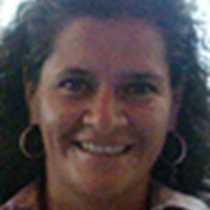Santa Cruz Island
Our destination today was Puerto Ayora, the largest town in the Galápagos and the home of the Charles Darwin Research Station. While visiting the Research Center, we had a chance to observe the most emblematic animals of the archipelago, the giant tortoises. We identified the differences between the 2 most common shell shapes: the dome shape shell or carapace and the saddle-backs. As we walked along the different corrals, we had the opportunity to explain that it is the ecosystem in which they live that determines the size and also the shape of the carapace.
By the end of the walk we learned that islands that have a higher altitude and the presence of fresh water due to rain and clouds will normally have abundant vegetation in which the tortoises do not need to make an effort while feeding. They will normally forage the ground eating whatever is found. As a result of that, the Santa Cruz tortoises together with the Isabela species end up being the biggest tortoises of the archipelago, easily weighting 600 pounds.
The saddleback, on the other hand, lives on arid islands where not much vegetation is found. The tortoises’ legs and necks are slightly longer. This difference in extremity size allows the tortoises to reach higher leaves on the vegetation; while extending the neck to reach the green, the carapace or shell is deformed, acquiring the shape that gives the archipelago its name.
As the day went by we experienced the very beginning of the cold season, breezes coming from the south and the presence of mist or garua. The Garua that is normally sitting on top of the Island will bring water to the vegetation and the birds that live in this vegetation zone of the archipelago. The Garua is also responsible for the name of the Islands… back in the early centuries when technology was not as sophisticated as it is today, sailors and early visitors of the Galápagos thought the strangest event was when the islands “disappeared.” They did not realize that the islands were covered in fog.
After another incredible day, we returned back to the ship having experienced the enchantment of this magical place!
Our destination today was Puerto Ayora, the largest town in the Galápagos and the home of the Charles Darwin Research Station. While visiting the Research Center, we had a chance to observe the most emblematic animals of the archipelago, the giant tortoises. We identified the differences between the 2 most common shell shapes: the dome shape shell or carapace and the saddle-backs. As we walked along the different corrals, we had the opportunity to explain that it is the ecosystem in which they live that determines the size and also the shape of the carapace.
By the end of the walk we learned that islands that have a higher altitude and the presence of fresh water due to rain and clouds will normally have abundant vegetation in which the tortoises do not need to make an effort while feeding. They will normally forage the ground eating whatever is found. As a result of that, the Santa Cruz tortoises together with the Isabela species end up being the biggest tortoises of the archipelago, easily weighting 600 pounds.
The saddleback, on the other hand, lives on arid islands where not much vegetation is found. The tortoises’ legs and necks are slightly longer. This difference in extremity size allows the tortoises to reach higher leaves on the vegetation; while extending the neck to reach the green, the carapace or shell is deformed, acquiring the shape that gives the archipelago its name.
As the day went by we experienced the very beginning of the cold season, breezes coming from the south and the presence of mist or garua. The Garua that is normally sitting on top of the Island will bring water to the vegetation and the birds that live in this vegetation zone of the archipelago. The Garua is also responsible for the name of the Islands… back in the early centuries when technology was not as sophisticated as it is today, sailors and early visitors of the Galápagos thought the strangest event was when the islands “disappeared.” They did not realize that the islands were covered in fog.
After another incredible day, we returned back to the ship having experienced the enchantment of this magical place!



